Track driving can’t beat night freeway downpour test
By John Gilbert
Joliet, Ill.—We poured out of the meeting room after breakfast to look over the rows of new cars we were about to test drive on the private road-racing course at the Autobahn Country Club. That’s when I first spotted the pair of compact SUVs, parked only a few feet apart, and clearly unrelated.
As it turned out, they were two of the most impressive vehicles, in my opinion, of the annual MAMA Fall Rally, held on October 2, 2019. The first one was a low and sleek vehicle, parked next to a flashy Ford Explorer, which itself has been redesigned as a 2020 SUV. But the low, sleek little black one was the new Escape — looking nothing like any Escape we’ve seen in the two decades of its life.
For further evidence, we drove the Escape and found it quick, agile and a treat to drive, around the side-roads surrounding the Autobahn Country Club. I drove it back in, and parked it in exactly the same spot it was, and when I climbed out, I spotted a gleaming white compact SUV — the new BMW X2, which, as a fool could guess, is smaller than an X7, X5, X4, and X3, and larger than the X1. This X2 also was an M35, meaning BMW’s high-performance treatment had imbued it with more power, special suspension, special interior, and everything you might want, if you can afford it, to update it from 2019 to 2020.
Driving the X2 was also a treat, and it would have been our No. 1 pick, except that the Escape was a much more user-friendly price, and you could undoubtedly buy two of them for the price of the X2. So in our ranking, the star of the show was the Escape, and the BMW X2 second. We vote on a “family vehicle of the year” through MAMA, which seeks real-world family virtues in a vehicle, which must also be a 4-door, to preclude racey coupes.
The Midwest Auto Media Association (MAMA) puts on two fantastic shows for its members every year, a Spring Rally at Elkhart Lake, Wis., on the Road America road course, and a Fall Rally at the Autobahn Country Club. That facility, with two complete road courses, is laid out with high-tech maintenance garages adjacent, and it’s just like a golf country club, only instead of playing golf, you come out, work on your favorite car, and go out and drive in on the track. Within reason, of course. The only downside was that the Chicago region was hit by pretty steady rain all day, so we either drove on the nearby roadways, or took it very easy on the race track.
Reporting about cars — and sports, too, for that matter — is a family affair in the Gilbert Household, and Jack, our older son, always accompanies me to the rallies, and was my co-driver down and back from Duluth to Chicago. He also takes photos and gives us two rear ends in the drivers seats and four eyes instead of two to scrutinize the new stuff. He agreed with me that the Escape and X2 were the two show-stoppers, although he would put the BMW first.
The field of vehicles was somewhat restricted this year, with one reason being the arrival of the threats by General Motors and Ford to cut back on cars, in favor of trucks. Also, there seemed to be fewer all-new vehicles among the cars of the world, and we did our best to scare them up.
We drove down in the Lexus ES300h hybrid luxury sedan, and I mentioned in last week’s report that we’d be able to more fully discuss that one after driving it 422 miles from Duluth to Joliet. I had said for most of the week, I had averaged about 32 miles per gallon, and, sure enough, on our trip — watching speed limits and the narrow lanes of road construction closely — we tallied 46.9 miles per gallon for the trip.
Toyota was the sponsor for the breakfast, and showed off its greatly ballyhooed and heavily promoted Supra. Very impressive, and a slick 2-seater that returns the brand to the high-performance sports car scene it seemed to have abandoned. The secret of the Supra is that Toyota collaborated with BMW to build it. BMW still makes an in-line 6, which was the engine of heritage in the previous Supra. There is tremendous power in that inline 6, with 335 horsepower and a torque rating of 365, which peaks at 1,600 RPMs and holds it up through 4,500 RPMs. Not bad for a 3,397-pound car, with 50-50 weight distribution. It starts at $49,995 in base form, but escalates almost as fast as its acceleration with options.
Among our other favorites was the distinctive blue Ford Explorer, in ST trim, tight and comfortable and another hit for Ford as the venerable SUV seems closer to full size nowadays, in its new shape and set-up. If Ford is dropping the Taurus, Fusion, Focus and Fiesta, it does have an army of SUVs to fill in.
At GM, things seem a bit shakier because of the ongoing strike, and the sudden demise of the Silverado pickup, which has dropped to third behind Ford and Ram in pickup sales. The midsize Colorado looks good, and the Silverado’s companion GMC Sierra looks good. Also, the new Blazer should sell as a compact crossover, and the redesigned Traverse are attractive entries in the crossover segment. Cadillac fills out its SUV array with the new XT4.
Honda put on the lunch break for the gathered hundred media types, and showed off the 2020 CR-V, its venerable compact crossover that goes into a new generation with a 1.5-liter Turbo and some restyling. There wasn’t one to drive, though. The upscale Acura division had an MDX available, and while it is a bit older than its more compact RDX sibling, it comes complete with every high-tech item imaginable, including the latest ELS Panasonic surround audio system. That actually was the first vehicle I drove, and as I followed a tight map around the suburban Autobahn neighborhood, sure enough we got stopped by a slow-moving freight train. It crept, slowly, for about 15 minutes, then stopped. We made a U-turn and found an alternate route. Good thing we had the ELS package.
Among other new vehicles, Ford’s expanding stable adds the new Lincoln Aviator, resurrecting that old name in an all-new form, with a 3.0-liter V6 and a hybrid power complement.
Another new vehicle was the Nissan Versa, redone for the new year with mild styling tweaks. Volkswagen had its new Arteon, and also the high-performing sibling GTI and GLI. Nissan had the latest version of the sizzling GTR sports coupe, with blinding fast acceleration and busy but meaningful styling.
Two driver-pleasing compacts were there, the Mazda3 in its new all-wheel-drive form both in sedan and hatchback, and Kia had its big, powerful Stinger sedan available, and also a new Soul, with its “upgrade” to the 1.6-liter Turbo, which has more dash than the 2.0-liter normally aspirated 4.
We will get into deeper analysis of all these cars as they become available for week-long test-fleet drives, and getting a head start on those is the South Korean Hyundai Palisade. I attended the introduction of the Palisade in the territory around Coeur d’Alene, Idaho, and wrote about it several months ago, and after recently driving the new Kia Telluride sister ship, it was nice to get a Palisade to drive home from Chicago to Duluth.
Or, it would have been nice had it not been for early October’s version of monsoon season. We always make an adventure out of getting to Joliet by circling the costly expenditure of tollways that help maintain the Chicago area’s beautifully kept tollways. Joliet is on the southeast corner of the Chicago metropolitan area, and to circumnavigate, we follow the freeway across Wisconsin and into Illinois at Rockford, then branch off straight south on Interstate 39. This time we cut off to the East on State Hwy. 30, and followed it all the way into Joliet, through some neat little towns.
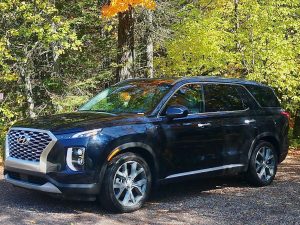
Pretty against fall foliage, Hyundai’s 3-row Palisade SUV proved a source of security in torrential nightime rainstorm on the interstate.
Coming back, we drove south out of Joliet, then cut West, hoping to outflank rush-hour traffic and find our way far enough to then cut North to that same Hwy. 30. Truth be told, we had spotted a homemade ice cream store in one of the little towns, and if there’s one thing Jack and I enjoy evaluating as much as cars, it’s ice cream. Now we try to compare to our new Duluth benchmark — Love Creamery — for imaginative flavors and quality. We seemed entangled in a never-ending network of small roads, however, and by the time we got to Hwy. 30, we were too far west to find ice cream. We did manage to beat the arriving low, grey clouds coming out of the west as we hastened up I-39 to get out of Illinois.
Our trusty Palisade had carried us northward until just past Madison, as we merged in with Interstates 90 and 94, the rain hit, hard. It seemed as though nine of every 10 vehicles on the freeway were semis, as darkness engulfed us and the rhythm of our wipers kept time. I learned new respect for the exceptional lane-centering electronics Hyundai loads into its vehicles when I was trying to edge past two semis running nose to tail on the construction-narrowed two freeway lanes, and came upon another semi, up ahead.
Holding our speed with the wipers flashing as fast as they’d go against the downpour, yet another semi closed in behind us. It was a tight little 5-vehicle mambo, and we were in the middle of it. But the Palisade tracked with amazing precision, keeping us centered in our lane until we could ease through the congestion and seek out more congestion up ahead. The rain kept up until we got to Eau Claire and never let up when we turned northward on state Hwy. 53, and followed up our journey to Duluth. My new motto for car-testing tempered my enjoyment for driving around the track:
When you’re voting for “family car of the year,” there is no better test for real-world survival features than a torrential downpour for 200 miles amid semis.


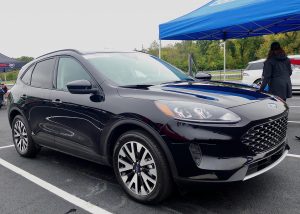
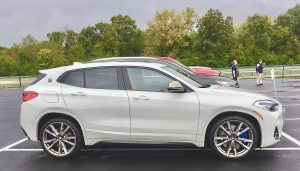
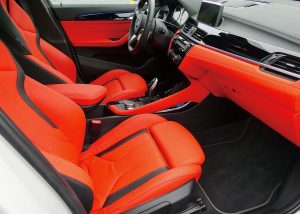
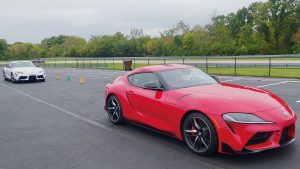
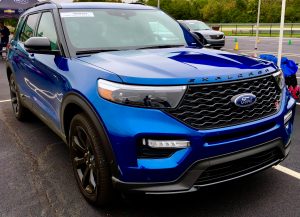
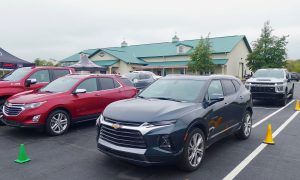
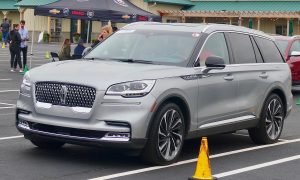
 John Gilbert is a lifetime Minnesotan and career journalist, specializing in cars and sports during and since spending 30 years at the Minneapolis Tribune, now the Star Tribune. More recently, he has continued translating the high-tech world of autos and sharing his passionate insights as a freelance writer/photographer/broadcaster. A member of the prestigious North American Car and Truck of the Year jury since 1993. John can be heard Monday-Friday from 9-11am on 610 KDAL(www.kdal610.com) on the "John Gilbert Show," and writes a column in the Duluth Reader.
John Gilbert is a lifetime Minnesotan and career journalist, specializing in cars and sports during and since spending 30 years at the Minneapolis Tribune, now the Star Tribune. More recently, he has continued translating the high-tech world of autos and sharing his passionate insights as a freelance writer/photographer/broadcaster. A member of the prestigious North American Car and Truck of the Year jury since 1993. John can be heard Monday-Friday from 9-11am on 610 KDAL(www.kdal610.com) on the "John Gilbert Show," and writes a column in the Duluth Reader.